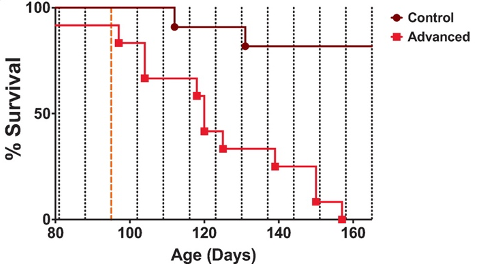Key Points:
- Rats with high blood pressure have higher stroke-related mortality rates when their circadian rhythms are disrupted.
- Time-restricted feeding lowers stroke-related mortality rates moderately for circadian-disrupted rats and significantly for rats with normal circadian rhythms.
Our circadian rhythms — daily cyclic changes in our internal physiology — encompass everything from our body temperature to our blood pressure. These rhythms are set by external cues such as light, darkness, and feeding times, allowing our body to predict changes in our environment. However, the uncoupling of our circadian rhythms from our external environment may lead to adverse health effects such as cardiovascular disease.
Now, researchers from the Morehouse School of Medicine in Georgia have found that time-restricted feeding counters the potential adverse consequences of disrupted circadian rhythms, namely the occurrence of stroke. Additionally, Ramsey and colleagues find that time-restricted feeding protects against stroke even in the absence of disrupted circadian rhythms, as reported in the American Journal of Physiology.
Disrupted Circadian Rhythms Promote Stroke
Since the 1970s, scientists have been studying cardiovascular disease using rats with a genetic predisposition to high blood pressure — hypertension. Ramsey and colleagues used these hypertensive rats to study the effects of disrupted circadian rhythms on stroke incidence. To do so, the researchers controlled the rats’ exposure to light and darkness by progressively advancing the dark phase of the day to an earlier time. The dark phase was shifted by 6 hours from the previous week’s dark phase throughout the rats’ lifespan. The consequent shift in circadian rhythms triggered by advancing the dark phase was confirmed by the rats’ movement, whereby the rats, being nocturnal, were most active during the dark hours.
Ramsey and colleagues evaluated the rats twice daily for signs of stroke onset and scored them based on various health parameters, including deficits in behavior, weight, and appearance. When the rats received a score of 13, meaning they were in imminent danger of spontaneous stroke, they were euthanized. In turn, the researchers found that the circadian-disrupted rats succumbed to stroke-onset (score of 13) earlier in life than rats with normal circadian rhythms, suggesting that disrupted circadian rhythms promote stroke.

Time-Restricted Feeding Delays Stroke Onset
Since previous studies have shown that time-restricted feeding improves circadian rhythms, Ramsey and colleagues restricted the feeding of circadian-disrupted rats to a 5-hour window. This led to a moderate decrease in stroke-onset when compared to circadian-disrupted rats with 24-hour access to food. Furthermore, time-restricted feeding also increased the lifespan of rats with normal circadian rhythms, suggesting that time-restricted feeding promotes survival from stroke.

Overall, the findings of Ramsey and colleagues suggest that disrupted circadian rhythms increase stroke incidence in rats with hypertension. Furthermore, the results suggest that time-restricted feeding decreases stroke incidence, with or without circadian disruption. These findings are in line with human studies showing that issues like hypertension are frequent in individuals with disrupted circadian rhythms (i.e., shift-workers).
Time-Restricted Feeding and Longevity
The single most powerful method for extending the lifespan of animals is caloric restriction (CR) — reducing daily caloric intake. Furthermore, a previous study showed that combining CR with time-restricted feeding extends mouse lifespan further than CR alone. Now, Ramsey and colleagues show that time-restricted feeding only moderately increases rodent lifespan in cases of circadian disruption. These studies suggest that time-restricted feeding should be circadian-aligned — aligned with our circadian rhythms. This means that consuming food only during the daytime (our most physically active hours) could potentially lead to longevity benefits, such as decreased risk of stroke. However, more studies are needed to determine if this is true for healthy individuals.